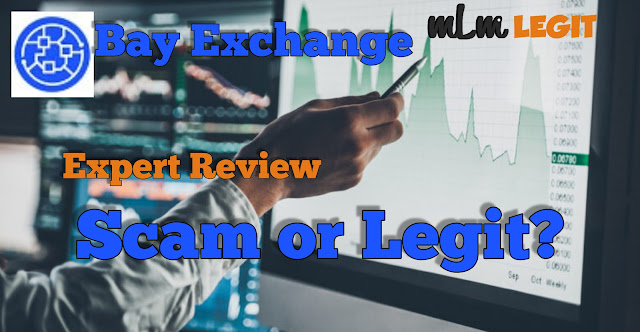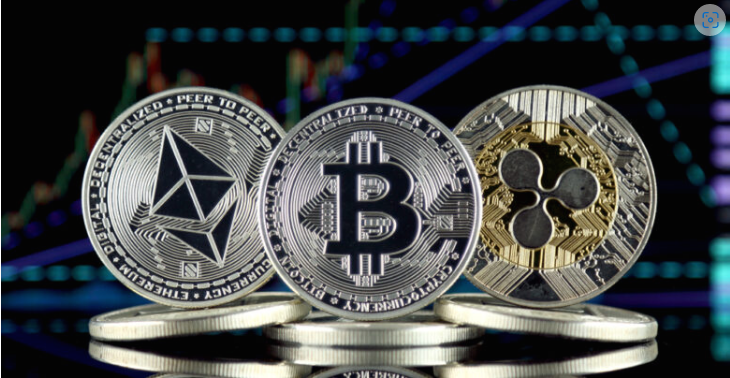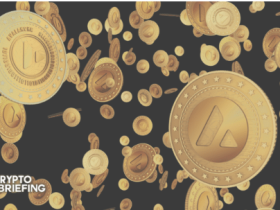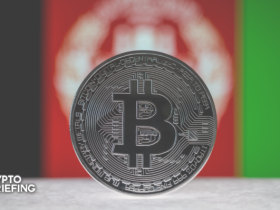Regulations and laws governing the financial services industry bind them worldwide or locally. And this can be quite restrictive in conveying the sector’s full potential. These restrictions have been established because the government is concerned that individuals will exploit the industry in order to engage in illegal actions such as sponsoring terrorist organizations or laundering illicit funds. However, there have been various attempts to boycott these issues, one of which led to the development of cryptocurrencies and the blockchain technology. ”
To better serve the worldwide population, these new advances are aimed at making financial services more accessible while also establishing new ones. Cross-border money transmission is a regular problem, and it has led to a dependence on certain currencies in a restricted volume.
In addition, another goal of crypto is to provide financial services to the unbanked people, especially those who are unable to meet certain standards based on the regulations governing financial activities in the jurisdiction where they reside.
A thorough understanding of how cryptocurrencies are traded is necessary before going into the meaning of nested and nesting exchanges. Your knowledge of cryptocurrency exchanges and other connected companies will be greatly enhanced as a result of doing so.
Various Cryptocurrency Trading Methods
1. Speculation in the Cost
A lot of questions remain unanswered after the introduction of cryptocurrency. Cryptocurrency security versus commodity is one of them. Some think it’s a virtual commodity, like physical gold, while others think it’s just a form of insurance.
Cryptocurrency traders commonly use CFDs to speculate on price movements, whether or not they think of the cryptocurrencies as securities. Just with FX, stocks, and indexes, so it is with them.
An investor can trade or invest in a certain asset without opening a position in the market directly using CFDs, which are contracts between a broker and an investor. Based on a pre-arranged agreement, a brokerage firm duplicates market circumstances and settles any discrepancies at the position’s end.
Direct trading has some disadvantages, and this method has some advantages. With these benefits, you can open short positions in various assets that aren’t often compatible with short positions, such as gold and silver.
MORE ARTICLES
In this review, we’ll reveal whether or not we think Scandinavian Capital Markets is legit or scam.
The market capitalization of Litecoin (LTC) fell by more than $2 billion in May.
Over 90% of Dogecoin’s (DOGE) Drop Since Musk’s SNL Debut
2. Trading in the Spots
As far as crypto market entry goes, this is the tried-and-true method.. With this way of trading crypto, you will have direct access to the asset, and you will also have to worry about the responsibility of owning a crypto wallet, including its security.
This type of trading involves purchasing crypto assets and holding them in escrow until their value rises. This implies that you are retaining a percentage of the overall supply of the asset.
There are two ways to get your hands on the crypto asset that is the king of trading. P2P trading is a way to find a fellow crypto trader who is willing to exchange the cryptocurrency you wish to buy for either fiat currency or another cryptocurrency that you both agree on.
As a matter of fact, Satoshi Nakamoto, the creator of the first cryptocurrency, Bitcoin, believed that cryptocurrencies could eliminate third parties from every financial transaction. You’ll need to set up a cryptocurrency wallet for this strategy.
Exchanges are another option for buying a crypto asset. To get started, all you have to do is meet the exchange’s eligibility conditions while creating an account.
Because of regulatory rules, opening a functional account on most crypto exchanges can take longer than planned. Anti-money laundering and anti-terrorism financing regulations require centralized exchanges to do KYC (know your customer) checks on their users, which can slow down transactions.
Due to a lack of licensing requirements in the country in question, some crypto exchanges may not be able to expand their services to such places. Nesting is a common effect of these transactions, as companies try to maintain service to their clients in these regions.
Next, this tutorial will explain what nesting is and why you should avoid it, as well as how to tell whether anything is a nest in the crypto world.
Exchanges are another option for buying a crypto asset. To get started, all you have to do is meet the exchange’s eligibility conditions while creating an account.
Because of regulatory rules, opening a functional account on most crypto exchanges can take longer than planned. Anti-money laundering and anti-terrorism financing regulations require centralized exchanges to do KYC (know your customer) checks on their users, which can slow down transactions.
Due to a lack of licensing requirements in the country in question, some crypto exchanges may not be able to expand their services to such places. Nesting is a common effect of these transactions, as companies try to maintain service to their clients in these regions.
Next, this tutorial will explain what nesting is and why you should avoid it, as well as how to tell whether anything is a nest in the crypto world.
Getting Started with Nesting
Security is a major concern in the crypto world. The best place to purchase or sell any crypto asset is via an established and well-respected website. Because of this, it is highly recommended. One of the conditions for a crypto exchange to be committed to your safety when you open an account is that you pass the AML and KYC checks. To get around these checks, some individuals join up for exchanges that offer minimal or none at all. Some websites even allow for real-time trading.
Exchanges that offer shortcuts may be decentralized, but others may be nested exchanges designed to handle laundered and stolen assets. Your money is not safe when you use these kinds of transactions.
As a result, we’ve written this tutorial in an effort to assist you detect and avoid nested exchanges, which can put your crypto assets at risk.
Defintion of nesting
This used to happen in financial institutions, where one financial service provider would open an account with another to use their services. The nested account holder’s goal is to leverage the new financial service provider’s services to serve their consumers in the area around the new account. This can be due to a variety of factors, but one of the most important is the geographic barrier.
If a bank in country X wants to extend its financial services and ecosystem to consumers in country Y, it may open a nested account with a bank in country Y, even though the bank in country Y is not physically present and established.
Let’s say that you’re in New Zealand and you need to transfer money to another bank account. Because his bank in the United States does not directly offer this service, they will use a nested account in New Zealand to complete the transaction. This means that the bank in New Zealand, and not the one in the United States, actually processed the transaction.
Since no KYC check has been performed on the nested account holder, the correspondent bank is serving customers who are unaware of this arrangement because of nesting in the financial industry.
what exactly is a Nested Crypto Exchange?
It’s the same in the crypto realm as it is in the conventional banking system. For the most part, nesting in the cryptosphere is a straightforward concept. Accounts with authorized crypto exchanges can be opened by individuals or organizations for the sole purpose of providing cryptocurrency trading services to a third-party community.
It is common for these exchanges to be referred to as instant exchanges, and they commonly have accounts with multiple crypto exchanges. For KYC checks, some of these exchanges may demand some form of identity, while others may require no identification as all. They are the perfect choice for scammers, fraudsters, and ransomers. It’s even possible to buy and trade cryptocurrency in person at some local exchanges that accept cash.
What’s the Risk of Nesting?
Nesting, from a traditional financial standpoint, carries the greatest risk of money laundering. For the most part, the correspondent bank with whom a nest account is formed has no idea who they’re working with when it comes to nested accounts. Nesting necessitates that the underlying banks do a more thorough investigation of the accounts of their customers.
Individuals, organizations, or countries might be sanctioned or blacklisted as a result of any flaw in the process, no matter how minor. A lack of due diligence in this area could lead to the nesting account holder and the account provider assisting unlawful financial activities such as money laundering.
Nesting exchanges can operate more freely due of the lack of a comprehensive regulatory framework in the crypto field, which is still being developed throughout the majority of nations and even globally. Nested exchanges could open an account with a regulated crypto exchange without the regulators noticing it.
What are the Risks of Building a Crypto-Nest?
Because of this, you and your funds are at danger when you utilize a layered crypto exchange rather than the centralized crypto exchanges itself. You will learn why employing a nested exchange is risky in the following section of the guide.
1. It is not possible to guarantee the security of your deposits in the same way that registered crypto exchanges can.
2. It’s possible that you’re funding terrorism and other criminal activity inadvertently.
3. Sooner or later, regulatory actions could force the nested crypto exchange to close for good, which could mean you lose your money and crypto.
4. Law enforcement organizations may take legal action if it is demonstrated that you are working directly with the nested exchanges to carry out illegal operations.
Nested crypto exchanges pose a number of risks, but the easiest way to avoid them is to stay away from them. The problem is that they aren’t evident, so detecting them could be difficult. In the sections that follow, you’ll find advice on how to be safe when dealing with nested crypto exchanges.
Decentralized and Nested Exchanges differ in what ways?
An exchange that is decentralized and one that is nestled can appear to be comparable at first glance. This is due to the fact that there are no Know Your Customer (KYC) regulations for decentralized exchanges, and the KYC procedure for nested exchanges can be more flexible or perhaps nonexistent altogether. But in the end, it will be the way they handle their transactions that distinguishes them.
Decentralized exchanges do nothing more than link buyers and sellers directly or employ liquidity pools in their place. This means that the exchange will no longer be in charge of their clients’ transactions, but will instead rely on running smart contracts to do so.
To make it appear as though they are providing the service directly when in reality they are utilising the services of other exchanges, a nested crypto exchange will take direct control over a crypto transaction.
The Suex Nested Exchange Problem
Let’s take a look at a real-world example of layered crypto exchanges to prove that they exist. On September 21, 2021, the Office of Foreign Assets Control sanctioned the Suex crypto exchange, incorporated in the Czech Republic but operating from a location outside of Russia (OFAC). Binance and other major crypto exchanges’ nested exchange services were employed by the Suex OTC to serve its consumers. Suex’s KYC processes are unparalleled, and they even allow for in-person cash exchanges for crypto transactions, making them a standout.
The prominent blockchain analysis group Chainalysis claims that Suex has been instrumental in laundering a huge amount of ransomware and hacker revenue. As a result, Binance has shut down all of the known Suex accounts, and the Office of Foreign Assets Control (OFAC) has put more than 30 wallets with Bitcoin, Ethereum, and Tether on a blacklist.
Chatex, a crypto bank with ties to the Suex Crypto exchange, was also deactivated in the deletion of accounts by Binance. Since then, the OFAC has placed sanctions on Chatex’s business operations. The ruling by OFAC forced the removal of the websites of Suex and Chatex as well, putting those who did business with Suex at danger.
How to Identify a Nested Crypto Exchange.
However, there are no evident signs that they’re nested exchanges, as was previously stated. If you want to keep your money and personal information secure in the crypto world, you should know how to discover nested exchanges.
1. There is just a modest focus on AML and KYC procedures and checks. Since the exchange is instantaneous, registering for an account could take as little as a few seconds.
2. It’s hard to see where the trades are taking place because the UI on their websites and mobile apps isn’t welcoming enough.
3. The exchange has not made it apparent that they themselves facilitate crypto trading. Trading takes done on the exchange’s platform, not through a nested account if it is a reputable exchange.
4. When you use a nested exchange, you’ll typically have the option to select from a variety of different exchange rates. If it is employing nested accounts from several exchanges with varying rates, it is apparent that it is a nested crypto exchange.
5. A Blockchain Explorer can be used to verify if a crypto exchange you’re utilizing is nested or not. Your crypto will be routed through another wallet if it is a nested exchange, even if you are using the primary exchange.
Conclusion
For the most part, using a licensed crypto exchange like Binance, Coinbase, or Kraken is the safest way to transact in the crypto market. These exchanges’ AML and KYC standards will keep you safe in the crypto sector, even if creating an account takes a while to complete.
Do your research before deciding on an exchange to use, just like you would any other financial institution.











 Bitcoin
Bitcoin  Ethereum
Ethereum  Tether
Tether  Solana
Solana  XRP
XRP  Dogecoin
Dogecoin  USDC
USDC  Lido Staked Ether
Lido Staked Ether  Cardano
Cardano  TRON
TRON  Avalanche
Avalanche  Shiba Inu
Shiba Inu  Wrapped stETH
Wrapped stETH  Wrapped Bitcoin
Wrapped Bitcoin  Toncoin
Toncoin  Sui
Sui  WETH
WETH  Bitcoin Cash
Bitcoin Cash  Chainlink
Chainlink  Pepe
Pepe  Polkadot
Polkadot  Stellar
Stellar  LEO Token
LEO Token  NEAR Protocol
NEAR Protocol  Litecoin
Litecoin  Aptos
Aptos  Wrapped eETH
Wrapped eETH  Uniswap
Uniswap  USDS
USDS  Cronos
Cronos  Hedera
Hedera  Internet Computer
Internet Computer  Ethereum Classic
Ethereum Classic  Bonk
Bonk  Bittensor
Bittensor  Render
Render  Ethena USDe
Ethena USDe  POL (ex-MATIC)
POL (ex-MATIC)  WhiteBIT Coin
WhiteBIT Coin  Dai
Dai  MANTRA
MANTRA  Artificial Superintelligence Alliance
Artificial Superintelligence Alliance  dogwifhat
dogwifhat  Arbitrum
Arbitrum  Monero
Monero  Stacks
Stacks  Filecoin
Filecoin  OKB
OKB 
Leave a Reply